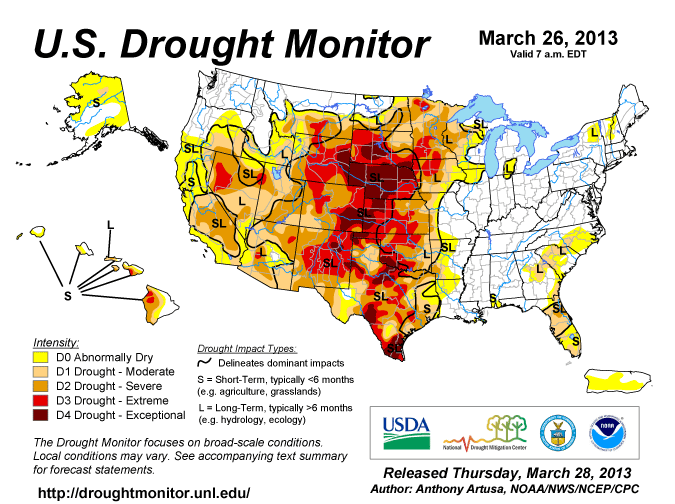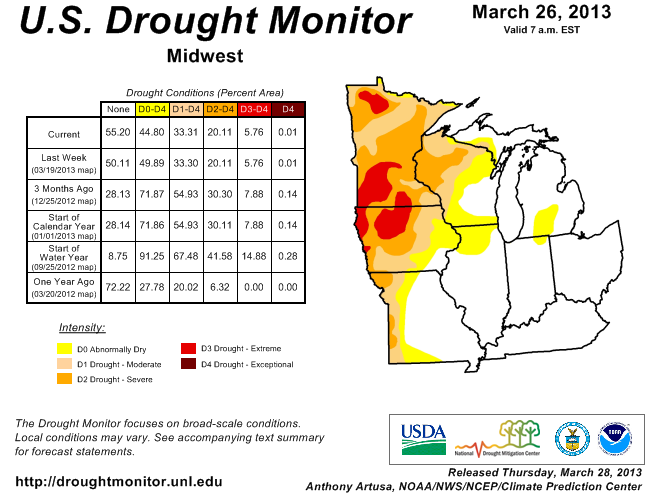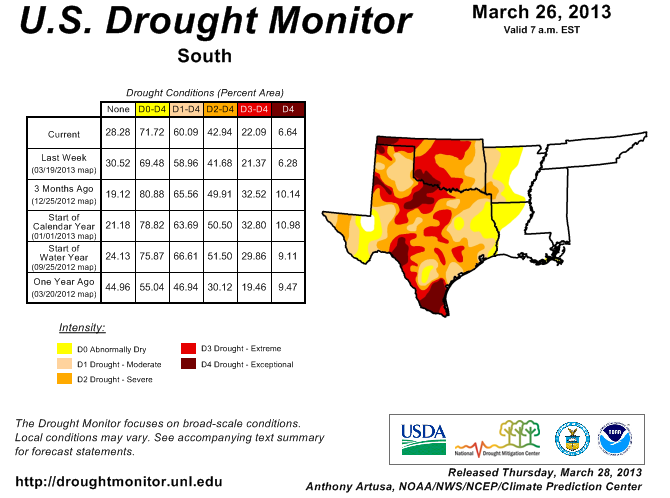One-Third of U.S. Drought-Free

According to the National Drought Monitor, 34.96% of the contiguous U.S. is drought-free, which is a minor change from 34.76% last week and compares to 43.91% a year-ago.
For the Midwest, the monitor notes that 55.2% is drought-free, which compares to 50.11% last week. It notes that moderate precip resulted in a reduction of abnormal dryness (D0) from western and central Missouri to southeast Iowa.
Meanwhile across the Great Plains, the monitor notes that 28.28% is drought-free, which compares to 30.52% last week. It says that Texas say another dry week, with six-month departure from normal precip tallies between 8 to 16 inches over much of eastern Texas. In the Oklahoma Panhandle cool temps have at least helped to offset the impacts from the current drought conditions and it notes that in Kansas, moderate precip resulted in a one-category improvement for northwest, northeast and east-central portions of the state. Western and central South Dakota saw only minor adjustments -- both improvement and degradation -- from last week.
During the next 5 days (March 28-April 1, 2013) a broad band of precipitation (0.5-2.0 inches) is expected from the interior Southeast westward across Arkansas and eastern Oklahoma. "Though most of this precipitation will fall on drought-free areas, the western portions (Arkansas and eastern Oklahoma) could certainly benefit from this rainfall. Elsewhere, the predicted precipitation amounts (generally around a half-inch) across the eastern half of the contiguous U.S. may be enough to offset additional degradation. Little if any precipitation is anticipated across a large portion of the High Plains, the central and southern Rockies, the Southwest, and the Florida peninsula," it notes.











